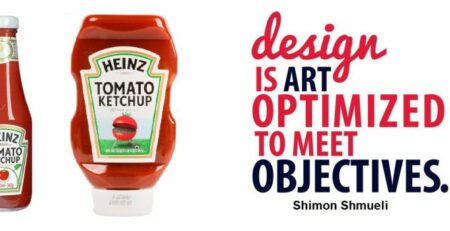A Complete Guide To Mastering UX Strategy
If you’ve ever tried to create an engaging product or website but felt like something was missing from the user experience, you’ve come to the right place. Having the flashiest design or most cutting-edge features isn’t enough; people need to actually enjoy using what you create. And that’s why User Experience strategy is important. In this guide, we’ll take you behind the scenes of the UX process so that you’ll have a complete toolkit for building user-centered products and websites by the end.
What Is UX Strategy?
UX is all about making sure technology works for people instead of the other way around. UX strategy takes this a step further by creating an overall plan to guide how the user experience is designed. It considers things like who is using the product, what they need it to do, and how it should work.
UX strategy helps answer questions like these before any coding or building begins. It aims to provide the best possible experience right from the start. Developing a UX strategy involves talking to users and understanding their goals and frustrations. It means sketching various ideas and choosing the best path forward.
A good strategy also aligns the business goals with what users want. It sets priorities and acts as a plan for the entire development process. The result is a smooth, helpful experience that keeps users engaged and coming back.
Key Components of UX Strategy
Vision
In any great adventure, you need to start with a vision. Where do you want to go? What do you hope to accomplish? This is just as important for your UX strategy. Defining your product vision lays the foundation for everything that follows.

Your vision should paint a clear picture of the ideal experience you want users to have once the project is complete. Envision how users will feel when interacting with the product – will they be excited, productive, and entertained?
The vision often starts broadly with big goals like “Create the number one video chat app” or “Become the easiest way for families to share photos.” From there, you can add richer details. It’s also important to align the vision with business objectives so that both users and the company can succeed.
Goals
In UX strategy, goals break down the broad vision into clear milestones to work towards. There are two main types of goals – business goals and user goals. Business goals focus on things that will help the company succeed, like sales targets or growth plans. User goals focus on what will improve people’s experiences, such as task completion or satisfaction ratings.
Ideally, business and user goals work hand-in-hand. For example, a business goal may be to “increase monthly active users by 20%”. To reach that, your user goal could be to “make onboarding two times faster by the next release.” But it’s also important to prioritize some goals over others. Marking a few as essential helps the team know which features and tasks are most critical.
Plans
After you and your team have defined an inspiring vision and set ambitious goals, how will you get there? This is where planning comes in. With the right plans and preparations, you’ll stay one step ahead on your quest for UX greatness.
The plans map out the entire adventure from start to finish. They lay the groundwork so each step builds logically on the last. A good UX plan should include the following:
- User Journey
- Feature Roadmap
- Design Standards
- Testing Approach
- Resource Allocation
- Risk Assessment
Having a thorough plan can provide clear expectations and objectives from the start. They also promote collaboration by getting everyone on the same page. Most importantly, they enable you to measure your progress and make adjustments as needed.
Importance of UX Strategy
Whether you’re an ambitious designer, product manager, or startup founder, learning the importance of getting your strategy right from the beginning is essential to the journey. So, in this section, we’ll explore the key reasons why investing in strategic planning pays off.
Supports Business Objectives
For any big project, the goals of the business and users must be aligned. Developing experiences just for the sake of it won’t keep the lights on. A vital part of a good UX strategy is making sure that the business objectives are considered from the start.
Some common business objectives might be increasing sales, growing the user base, or lowering customer support costs. The UX strategy supports achieving these targets by understanding which features and flows directly impact metrics like conversion rates or retention.
If you directly link the business and user goals, the strategy shows how good experiences can fuel growth. It proves that prioritizing the user doesn’t need to come at the expense of profits. With business objectives integrated into every step, your UX strategy is set up for real impact that keeps users fully on board.
Drives Business Goals and Growth
For a business to be successful, it needs to keep growing over time. A good UX strategy helps make sure this happens. The strategy decides which areas to focus on improving by asking customers questions. This helps figure out what really matters to people using the product.
Teams then test different ideas to see what works best. For example, a photo app might test faster loading times versus more creative editing tools. Whichever helps more gets expanded. As the product gets better at the important things, more customers will join and use it regularly. This means the business earns more money through ads, subscriptions, or features.
The strategy also sets milestones, like growing the user base by 20% in 6 months. Teams work toward these goals, which keeps everyone focused on the same targets. Over time, following the strategy guides improvements that allow the business to naturally earn more money each year through a growing customer base.
User-Centric Approach
A user-centric approach means putting users and their needs at the center of all design and development decisions. This is extremely important in UX strategy because if users aren’t happy, the whole experience fails. And to truly understand users, the strategy relies heavily on research methods like surveys, interviews, and observations. This helps discover what users really struggle with, how they accomplish tasks, and what they really want or value.
With deep insights into different user groups, the strategy can then focus on solving the most pressing problems for each type of user. Maybe teachers need a fast way to grade assignments, while students want easy remote learning. Other business or marketing goals take a backseat to ensuring all designs align with actual user needs. This way, the strategic approach guarantees that the end experience will exceed expectations.
Improves User Experience and Satisfaction
A well-thought-out UX strategy is crucial for providing a great experience for its users. By starting with in-depth research into user needs, pain points, and behaviors, the strategy can gain vital insights. This helps to place priorities like which tasks must be simplest or which information is most important to display up front.
You can then carefully plan features, flows, and designs around these real user perspectives. For example, if your research found confusion in checkout, the strategy may suggest simplifying the payment process. If you focus on usability from the outset, it prevents frustrating experiences down the line. Also, testing concepts and prototypes early can quickly reveal any problematic areas that need improvement.
This results in an experience that explicitly simplifies the user’s tasks and addresses their needs through research. Therefore, users face less confusion and fewer errors in accomplishing their goals.
Future-Proofing
Businesses today need to evolve fast because customers and technology are always changing. A good UX strategy looks ahead to anticipate this future change. Part of strategy work includes trend research. Your team has to study what’s new in industries, technologies, customer lifestyles, or competitors. This helps predict what users may expect down the line.
For example, monitoring your users’ social media habits could reveal that people want more sharing tools. Or seeing smart tech emerge may mean that you might need to start supporting voice commands later. The strategy also considers different scenarios that may disrupt the business, like new regulations down the line. It explores opportunities created by various circumstances to improve the experience.
Strategic planning ensures that user experiences stay optimized into the future without needing any expensive rework. Being flexible in your UX design helps to protect your investments and keep your products feeling fresh for much longer.
How to Create a UX Strategy
Now that you understand how important UX strategy is, you’re probably excited to get started creating your own! Developing a solid plan takes some work but will pay off by guiding your whole experience to success. Let’s dig in!
Understand Business Goals and Objectives
The very first step is knowing what your company wants to achieve. Important goals can include making money, getting more customers, or creating the best product.
Talk to different teams like marketing, sales, and management to understand these goals. Ask them questions like “What problems do you want to solve?” and “How will we know if we succeed?” Their answers can help reveal the main objectives. Some common goals could be getting a certain number of new users each month, having customers buy more items per visit, or lowering customer support costs.
With clear objectives, the rest of the UX strategy can directly focus on how the user experience impacts reaching those aims. Also, make sure to document all goals and objectives clearly so everyone creating the experience can always refer to them.
Conduct User Research
To build the best experience, you need to truly understand your users. That’s why research is so important. You can use helpful research methods like surveys, interviews, and usability tests to understand the users.
Surveys let you quickly ask big groups basic questions. Interviews give a chance to dive deep into individual users’ lives and needs. Usability testing involves watching people use your product to see where they get stuck.
During the research, ask questions to uncover things like who your users are, what tasks they need to do, what they like/dislike about similar products, and the pain points they currently face. Get input from both current and potential future users. These will inform strategic choices later on, such as what problems should be solved first or how features should be designed.
Map Out The User Journeys

It’s important to understand how users will interact with your product or service from start to finish when designing great experiences. That’s where user journey mapping comes in. A user journey maps the different steps someone goes through when accomplishing a common task, like making a purchase. You identify all the key moments and touchpoints along the way.
Start by selecting some common scenarios based on your research, like new users signing up or frequent customers reordering. Next, brainstorm each step involved, from learning about the product to account creation, checkout, and beyond. Include actions, decisions, emotions, and any other details necessary. You can sketch these out visually on a whiteboard or use electronic mapping tools.
Mapping the entire process reveals opportunities to improve, streamline, or personalize the user’s path. It also shows where users may get confused or frustrated.
Create Prototypes and WireframesOnce you understand goals, users, and journeys, it’s time to visualize your designs using prototypes and wireframes. Wireframes are simple sketches of the basic interface layout, like page templates or app screens. They show structural elements without graphics or text.

Prototypes replicate real interactions and experiences by letting you click through a simulation. Creating different options at this stage allows you to compare ideas before building anything for real. This way, you can refine concepts, get feedback, and decide on the best overall strategy.
Design Testing Process
When designing a good strategy, you must figure out how to test ideas and validate assumptions before and during development. This ensures the experience will really work as intended. The strategy should also outline the specific tests that will be used.
Usability tests involve watching representative users try to accomplish typical tasks while thinking out loud. This will help to reveal any pain points or confusion. But also make sure to test throughout development to keep improving the final product.
Measure and Analyze Data
After testing ideas and launching products, you must see how people actually interact with them in reality. The strategy should, therefore, outline the key metrics to track, like how many new users sign up each week or how long people use the app each day. Tracking these numbers over time can reveal trends and patterns.
Developers can add tracking codes to websites and apps so they can automatically gather useful info without bothering users. They can track metrics buttons clicked, pages visited, times users quit tasks, and more. You can then use analytic tools to track these numbers in easy-to-understand charts and graphs. This makes it easier to spot patterns, like if certain parts are too complicated.
If the goals that were set from the onset aren’t being met, you can make some changes here and there. You can now conduct more testing after making these changes to help make the experience even better based on the real usage data.
Conclusion
Congratulations! You have successfully completed your journey to becoming a UX strategy expert. Through mastering user research, journey mapping, prototyping, and data-driven improvements, you are now equipped with the essential tools to design experiences that are nothing short of royal. Remember, the cornerstone of any effective strategy is a deep understanding of your customers and prioritizing their needs above all else. Continuously engage with real users to enhance your insights.
At iCreatives staffing, we recognize the critical role that UX designers and other creative professionals play in crafting a robust UX strategy. Our Creative staffing agency offers a vast network of skilled contractors ready to assist with user research, journey mapping, and prototype testing, all without the commitment of a full-time hire. To begin, contact us at (+1) 855.427.3284 today.












